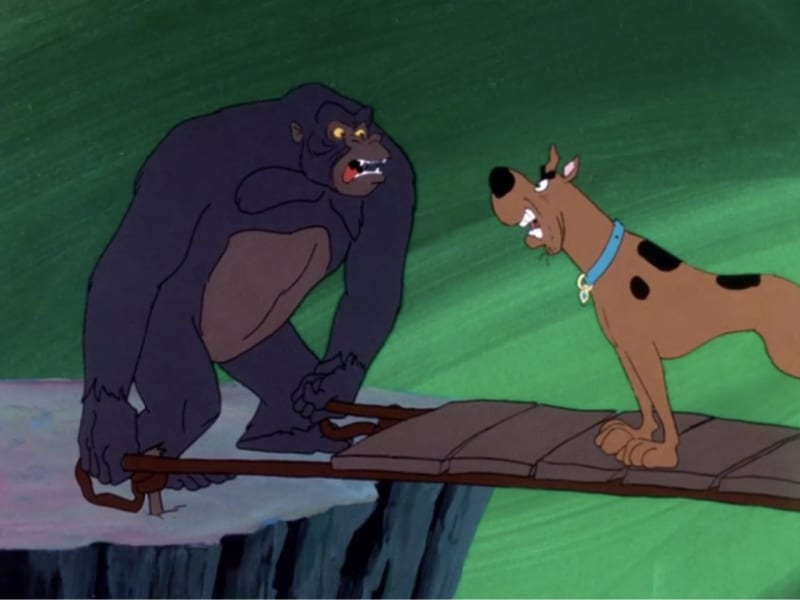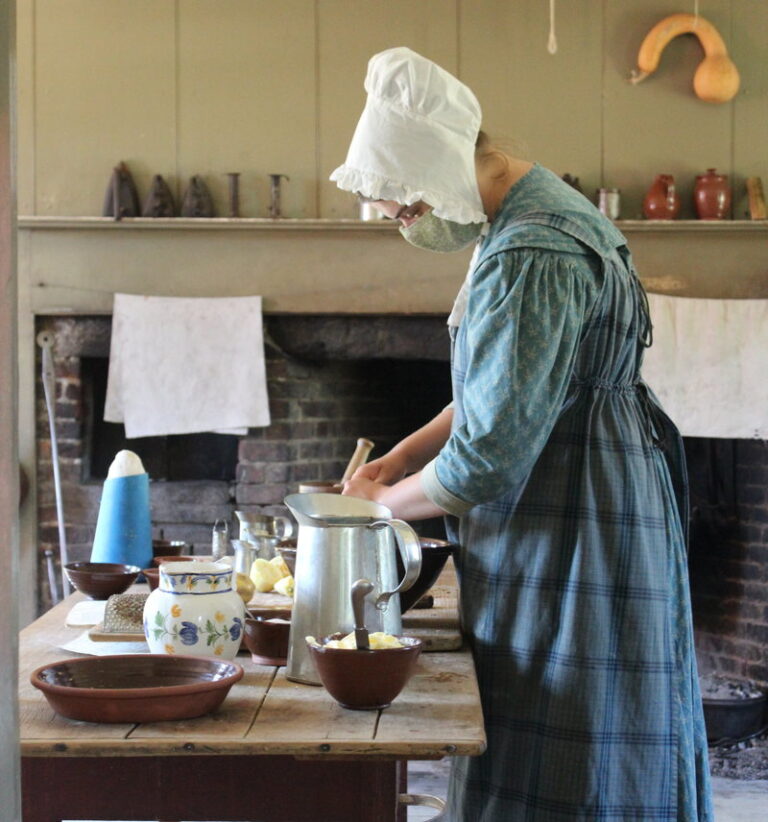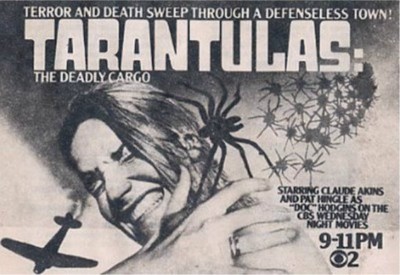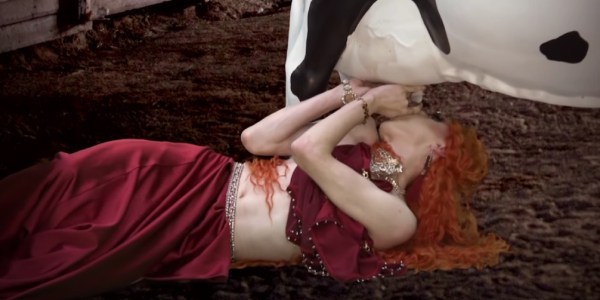Ruby-Spears Made Damn Weird Cartoons
Welcome to Saturday Morning Cartoons, our weekly column where we continue the animated boob tube ritual of yesteryear. Our lives may no longer be scheduled around small screen programming, but that doesn’t mean we should forget the necessary sanctuary of Saturday ‘toons. In this entry, we spotlight the Hanna-Barbera splinter cell Ruby-Spears.
By the mid-1960s, Hanna-Barbera Productions dominated children’s entertainment (and even had a strong foothold in primetime viewing thanks to The Flintstones and The Jetsons). A decade later, their supreme status was on the decline. Hits were harder to attain, and when they happened, they burned bright but short.
Many of us remember Josie and the Pussycats, Jabberjaw, and The Funky Phantom, but none of them lasted beyond a few handfuls of episodes. While you may look fondly on those cartoons, you can’t possibly recall Goober and the Ghost Chasers, Clue Club, or Inch High Private Eye. We shouldn’t even mention The Amazing Chan and the Chan Clan. Yikes.
Television executives needed a new game in town, a couple of tenacious go-getters who could give Hanna-Barbera a run for their money. Fred Silverman was the head of programming at CBS in the early 1970s and was responsible for commissioning many of Hanna-Barbera’s shows (Fred from Scooby-Doo is even named after him). However, when he jumped ship to become the president of ABC Entertainment, he thirsted for new blood, and Ruby-Spears Productions was there to satiate.
Joe Ruby went from a stint as an animator and editor at Walt Disney Productions into the Army for a tour and back to Hollywood for some live-action TV work before tumbling into Hanna-Barbera as a sound editor. Ken Spears was best buds with William Hanna’s son, which afforded him a quick entrance into Hanna-Barbera as a sound editor as well. Ruby and Spears hit it off immediately, and at the time, Hanna-Barbera was a tiny organization, allowing a couple of sound editors to graduate into screenwriting.
They proved their skill as writers by cranking out scripts for Space Ghost and The Herculoids. In 1969, when Hanna-Barbera requested an animated mystery series for Saturday mornings, Ruby and Spears brought them Scooby-Doo, Where Are You?. Where Hanna-Barbera struggled to maintain popularity for Jabberjaw, there was no stopping Scooby and the gang. Decades later, the IP is as popular as ever.
After Scooby‘s success, Silverman lured Ruby and Spears to ABC and made them executives in charge of revamping their Saturday morning programming. Fangface was their Scooby-Doo. The Plastic Man Comedy/Adventure Hour was their Super Powers. After that, the shows got really nuts.
Ruby-Spears never reached the heights of Hanna-Barbera. They only operated independently from 1977 to 1981 before Taft Broadcasting brought them into their fold (they’d already acquired Hanna-Barbera several years earlier). Under the merger, the Hanna-Barbera name took precedence, and all Ruby-Spears projects going forward would be sold and resold under the HB banner. Like many siblings, they never quite escaped their elder brothers’ shadow.
In the history of Saturday Morning Cartoons, Ruby-Spears stands apart as a production company that crafted some of the most inventive and strange children’s stories. The ’70s were a wild era of experimentation, and while they would eventually seek quick bucks with licensed properties like Mister T, Police Academy, and Rambo, they consistently swung wickedly toward the fences.
Below is a smattering of their peculiar brand. Naturally, we must highlight the golden absurdity of Scooby-Doo, Where Are You?, as that’s where this whole shebang erupted, but after that, we get weird with Ruby-Spears. Only the first two series are readily available to rent or stream, but the joys of being a Ruby-Spears fanatic comes from the challenge of collecting their ‘toons. You gotta work for ’em.

Scooby-Doo, Where Are You?
Scooby-Doo‘s original iteration lasted for two years, before being retooled into Scooby’s All-Stars and The Scooby-Doo/Dynomutt Hour, not to mention the nearly endless variations we’ve experienced since 1969. The hippie-dippie teenage detectives were the direct result of Hanna-Barbera wishing to tone down the violence of their shows, as parents were starting to express concern over their various superhero punch-em-up programming. How do you have thrills and spills without fisticuffs and bullets? Monsters who were always unmasked as boring, greedy old fogies.
Scooby-Doo’s name derives from a character in an unsold 1953 TV pilot called Swingin’ Together. His cowardly personality stems from Bob Hope’s horror comedies like The Ghost Breakers, where the actor would rather be anywhere than the spook show he’s shoved inside. The plots were always the same: the Mystery Machine is on the road to somewhere, but when they get there, the destination is haunted by vampires, demons, ghosts, or pirate ghosts. The outcome is predictable: old man Slattery would have gotten away with it, if not for these meddling kids.
Scooby-Doo, Where Are You? remains a goofy yet satisfying twist on Agatha Christie adventures. They’re easy to play along to, spotting the baddies the moment they rear their wrinkled heads, and the scripts consistently drop gags every two-minutes. Where the series rises above the rest are in the astonishingly toyetic creature designs. We’ve had numerous Scooby and Shaggy figures over the years, but where the hell is our line of baddies featuring the Ghost of Captain Cutler and the Big Top Ghost Clown?
Thundarr the Barbarian
Speaking of radically but utterly mystifying creature work, Thundarr the Barbarian is an astonishing feat of powerfully psychedelic physiques. The iconic comic book artist Alex Toth worked his way into Hanna-Barbera with his Space Ghost design. Following in his stride, several comic creators stormed LA, including Howard the Duck co-creator Steve Gerber. Working closely with Ruby-Spears and Toth, Gerber spewed the post-apocalyptic nightmare vision of Thundarr the Barbarian from his proudly perverted melon.
Jack Kirby, the man who co-created the Marvel Universe, joined Toth as a production designer on the series. When Toth’s career pulled him elsewhere, Kirby took over the character blueprints. Nearly every werewolf, fire-whale, robot-wizard, and pig-mutant hurls from his crackling mind.
Along with Toth and Kirby came other comic book masters: Martin Pasko, Gerry Conway, Mark Evanier, and Roy Thomas. Thundarr the Barbarian is an essential watch for Marvel and DC Comics geeks. You scour over it the way you do Kill Bill or Once Upon A Time…In Hollywood; every little frame features a gateway to an undiscovered treasure.
Turbo Teen
Ok, so Jack Kirby is a god of emotional designs, but they can’t all be winners. Turbo Teen is a series that simply needs to live in your brain. Teenage dragster Brett Matthews swerves his car off the road and crashes into a secret governmental laboratory. After he and his car are accidentally exposed to a molecular beam, the two fuse together. Depending on the temperature in the room, Brett can morph back and forth between human and hotrod. Yeah, Knight Rider it’s not, even though it so desperately wants to be.
Fangface
Looking for another Scooby-Doo, Ruby-Spears unleashed Fangface upon an unsuspecting public. Once again, we have a batch of weirdo teenagers hanging around with a dog, or in this case, a dogman. The titular hero is one of their buds, but whenever the moon rises in the night sky, he gets a little hairy. The show is never as clever or as funny as Scooby-Doo, Where Are You?, but like most of Ruby-Spears’ programming, half the pleasure comes from its bevy of biologically bonkers monsters. Atlantian sea beasts, space spiders, and lava men — oh my!
Sectaurs
Sectaurs comes much later in the Ruby-Spears filmography, and well after their Taft Broadcasting purchase. Seeing all the toy moolah brought in by ’80s shows like Transformers, G.I. Joe, and He-Man, Ruby-Spears wanted in on the action figure market. Partnering with the toymakers at Coleco, they produced only five episodes of Sectaurs as a means of filling in a backstory for a collection of bug-faced figures and their arachnid-shaped vehicles.
The show was weak, but those toys were straight fire. Characters like the old warrior Pinsor rode atop a mighty Battle Beetle. To operate his stead, you would jam your fist into the Beetle’s backside, where your fingers would extend into his little legs, and suddenly, you were an insect puppet master. He-Man‘s Masters of the Universe got all the glory, but they never had an avatar as interactive or bodacious as Pinsor’s Battle Beetle.
In many ways, Sectaurs represents a low point for Ruby-Spears, but in retrospect, the short-lived series underscores the majesty of their imagination. These creators thrived in a risk-averse business, hiring a stable of like-minded oddballs to inject ingenuity into a medium always in danger of plummeting into the doldrums. Ruby-Spars never failed to keep your eyes open while you munched cereal.





